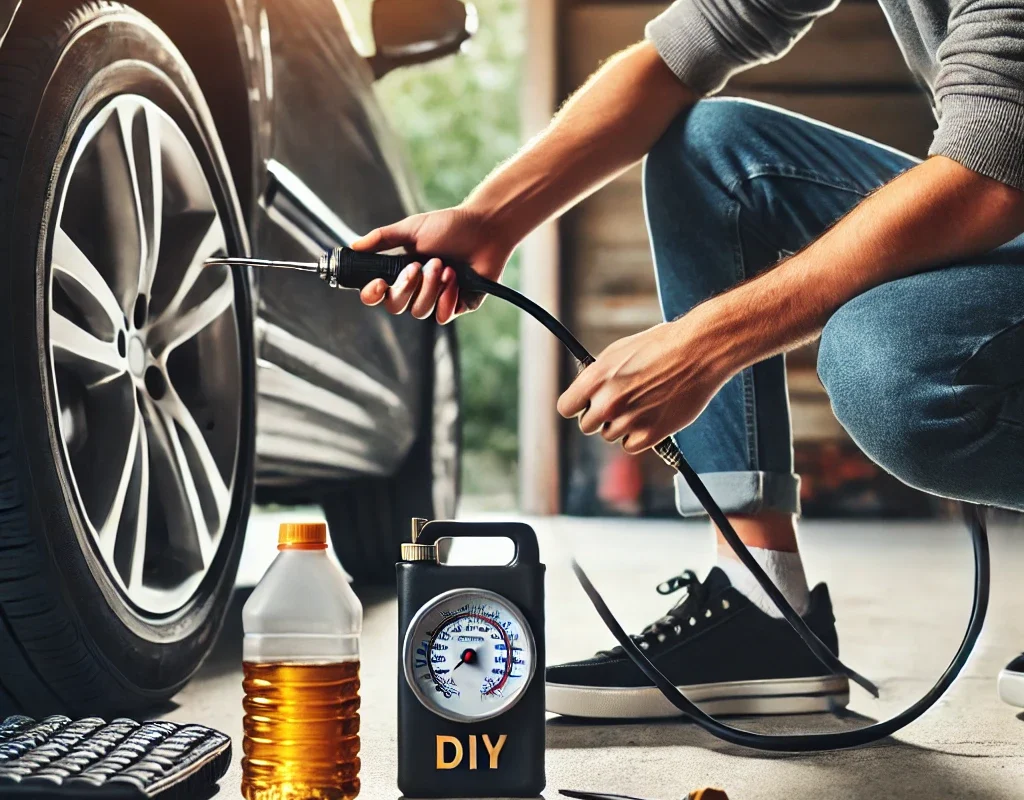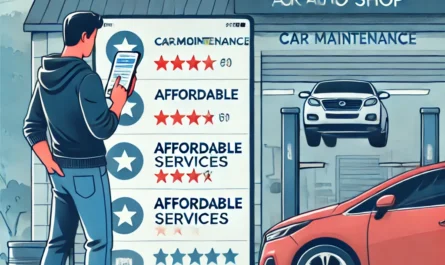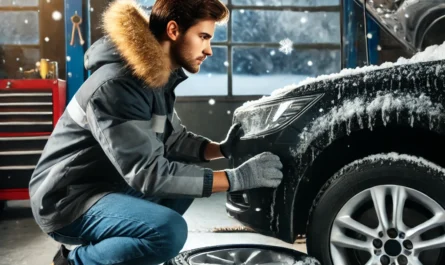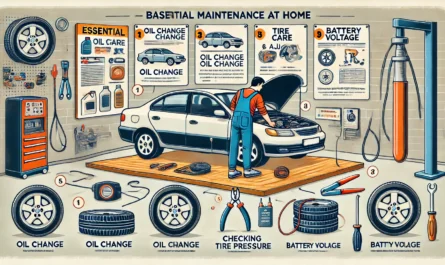Car maintenance can be a significant expense, especially if you rely on a mechanic for every small repair. However, many routine tasks can easily be handled at home with a little knowledge and some basic tools. Taking a DIY approach to car care not only helps you save money but also gives you more control over your vehicle’s performance and upkeep.
This guide will provide you with practical DIY tips to help you save money on car maintenance, covering simple tasks like oil changes, tire rotations, and brake pad replacements. With these tips, you’ll be able to perform essential repairs and maintenance without breaking the bank.
Benefits of DIY Car Maintenance
Performing your own car maintenance offers several advantages:
- Cost Savings: One of the biggest benefits of DIY car care is saving money on labor costs. Mechanics can charge high hourly rates for even the simplest tasks, but by doing the work yourself, you can significantly reduce those costs.
- Convenience: Rather than waiting for an appointment at the repair shop, you can perform maintenance tasks on your own schedule.
- Better Understanding of Your Vehicle: DIY maintenance helps you become more familiar with your car’s components and how they work. This knowledge can help you spot potential issues before they become serious problems.
- Increased Confidence: Successfully completing a repair or maintenance task can give you a sense of accomplishment and build your confidence in handling other vehicle-related tasks.
Essential DIY Car Maintenance Tips
If you’re new to DIY car maintenance, start with these simple yet effective tasks that require minimal tools and experience.
1. Oil Changes
Changing your own oil is one of the most common and cost-effective DIY car maintenance tasks. Oil changes are essential for keeping your engine running smoothly and preventing damage from old, dirty oil. While most mechanics charge anywhere from $30 to $70 for an oil change, you can do it yourself for the cost of oil and a filter—typically between $20 and $40.
What You’ll Need:
- New engine oil (check your owner’s manual for the correct type)
- Oil filter
- Oil filter wrench
- Socket wrench
- Drain pan
- Funnel
How to Do It:
- Warm up your car by driving it for a few minutes to loosen the oil.
- Jack up your car and place it on jack stands for safety.
- Place a drain pan under the oil pan, then use a wrench to remove the oil drain plug.
- Allow the oil to drain completely, then replace the drain plug.
- Use the oil filter wrench to remove the old filter and install the new one.
- Refill the engine with the correct amount of oil using a funnel, then check the oil level with the dipstick.
2. Air Filter Replacement
A clean air filter helps your engine breathe better, improving performance and fuel efficiency. Replacing the air filter is a quick and inexpensive task that can be done in just a few minutes. While a mechanic might charge $50 or more to replace an air filter, you can do it yourself for around $10 to $20.
What You’ll Need:
- A new air filter (check your owner’s manual for the correct size)
- Screwdriver (if needed)
How to Do It:
- Locate your car’s air filter housing, which is usually near the engine.
- Open the housing by removing clips or screws.
- Remove the old filter and place the new one inside.
- Close the housing and secure it with the clips or screws.
3. Tire Pressure Checks and Adjustments
Proper tire pressure is crucial for fuel efficiency, safety, and tire longevity. Checking and adjusting your tire pressure is an easy DIY task that takes only a few minutes and can improve your vehicle’s performance while preventing uneven tire wear.
What You’ll Need:
- Tire pressure gauge
- Air compressor (available at most gas stations)
How to Do It:
- Check your tire pressure when the tires are cold, using a tire pressure gauge.
- Compare the reading to the recommended tire pressure listed in your owner’s manual or on the sticker inside the driver’s door.
- If the pressure is too low, use an air compressor to inflate the tires to the recommended level. If it’s too high, release some air until it reaches the proper pressure.
4. Windshield Wiper Blade Replacement
Worn wiper blades can affect visibility during rain or snow, making driving hazardous. Replacing windshield wiper blades is a simple task that can be done in minutes, and it’s far cheaper to do it yourself than paying a mechanic. New wiper blades typically cost between $10 and $25, depending on the size and brand.
What You’ll Need:
- New windshield wiper blades (check the correct size in your owner’s manual)
How to Do It:
- Lift the wiper arms away from the windshield.
- Press the release tab on the wiper blade and slide it off the wiper arm.
- Slide the new wiper blade onto the arm until it clicks into place.
- Lower the wiper arm back onto the windshield.
5. Battery Maintenance
Your car’s battery is essential for starting the engine and powering electrical components. Regularly cleaning the battery terminals and ensuring a strong connection can extend the battery’s life and prevent issues like corrosion. While professional battery cleaning services can cost $20 to $50, you can do it yourself for the cost of a simple battery cleaning kit.
What You’ll Need:
- Wire brush or battery cleaning tool
- Baking soda and water (for cleaning)
- Wrench (to remove battery cables)
- Petroleum jelly (to prevent corrosion)
How to Do It:
- Disconnect the battery by removing the negative cable first, followed by the positive cable.
- Clean the battery terminals using a wire brush or battery cleaning tool to remove any corrosion.
- Mix baking soda with water to create a cleaning solution and apply it to the terminals. Scrub with the brush.
- Rinse with water and dry with a clean cloth.
- Apply a thin layer of petroleum jelly to the terminals to prevent future corrosion.
- Reconnect the battery, positive cable first, then the negative.
When to Call a Professional
While many maintenance tasks can be handled at home, certain repairs and services are best left to professionals. If you’re dealing with more complex issues like engine repairs, transmission problems, or brake system overhauls, it’s a good idea to visit a trusted mechanic. Attempting these repairs without the proper tools and knowledge can lead to more damage or safety hazards.
Advanced DIY Car Maintenance for Experienced Home Mechanics
If you’re comfortable with basic car maintenance and want to take on more advanced tasks, here are a few projects that can save you even more money over time:
- Brake Pad Replacement: Replacing brake pads yourself can save you a significant amount compared to having a mechanic do it. However, this task requires more tools and experience, so be sure you’re confident in your ability before attempting it.
- Replacing Spark Plugs: Changing spark plugs can improve engine performance and fuel efficiency. While it’s a relatively straightforward job, it requires attention to detail and the correct tools.
- Coolant Flush: Over time, coolant breaks down and can lead to engine overheating. Flushing and replacing the coolant is a task that can be done at home with the right equipment, saving you the cost of a professional service.
You can also read: The Ultimate Guide to Essential Car Services Every Driver Needs
How to Stay Safe While Performing DIY Car Maintenance
Safety is a top priority when working on your car, especially for tasks that involve lifting the vehicle or working around the engine. Follow these safety tips to ensure you’re protecting yourself while performing DIY car maintenance:
- Always use a sturdy jack and jack stands when lifting your vehicle.
- Wear protective gloves and eyewear to prevent injuries from chemicals or debris.
- Work in a well-ventilated area, especially if dealing with oil, fuel, or exhaust components.
- Disconnect the battery before working on electrical components to avoid shocks.
- If you’re unsure about a task, consult your vehicle’s owner’s manual or seek professional advice.



